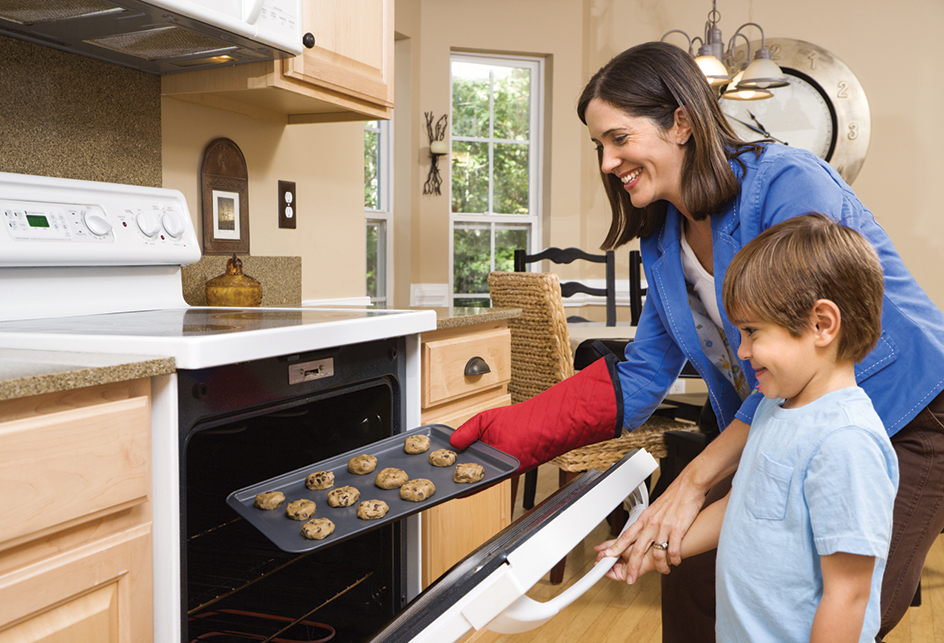Baking is the process of cooking food using hot, dry air, usually in an oven. Breads, cakes, cookies, and pies and other pastries are baked foods. Casseroles and some meat and vegetable dishes are also baked. This article will deal mainly with breads and baked desserts. For more information on preparing other baked dishes, see the Cooking article.

Baking ingredients.
Most baked foods are made from a dough or batter. Recipes for doughs and batters are precise scientific formulas. The ingredients must be balanced according to how they chemically react.
Wheat flour is a common ingredient in baking. It contains molecules called proteins. When mixed with a liquid, these proteins form a sticky, stretchy substance called gluten. Gluten gives strength and structure to baked goods. However, some people cannot tolerate gluten and so must avoid foods made with wheat flour.
In addition to flour and such liquids as water or milk, many doughs and batters contain leavening agents. These substances leaven (lift) the dough or batter and give baked goods an airy texture. Yeast, baking soda, and baking powder are common leavening agents. They create carbon dioxide gas that expands when heated. The stretchy network of gluten holds in the expanding gas, much like many tiny balloons blowing up inside the batter or dough. Not all baked goods use a leavening agent to produce gas. Some rely on air bubbles whipped into the batter, or steam produced from water in the dough or butter. Without any leavening, the baked product will be flat and dense.
Other common ingredients include sugar, salt, eggs, and such fats as butter and shortening. Some ingredients, such as sugar and fat, act as tenderizers. Others dry out or toughen baked goods.
The baking process.
After a batter or dough is placed in a hot oven, it begins to heat up. Different ingredients react as they reach certain temperatures.
First, temperatures between 90 and 130 °F (32 and 54 °C) cause any solid fats to melt and spread out. In pie crusts and croissants, layers of spread-out fat create a flaky texture.
Next, gases in the batter or dough expand, stretching or lifting the product. At temperatures between 140 and 160 °F (60 and 71 °C), proteins in the flour coagulate (become firm). Starches in the flour absorb water in the batter or dough, creating structure.
Finally, moisture on the outside of the batter or dough evaporates. This evaporation allows a browned crust to form.
